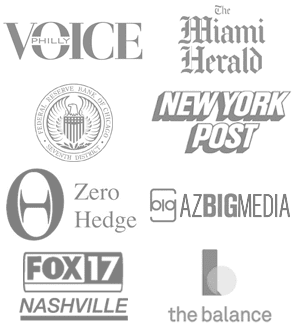Done correctly, refinancing a mortgage can be a strategic move to lower interest rates, reduce monthly payments, or access home equity for other financial goals. For many, however, providing traditional income documentation like W-2s or tax returns poses a challenge, particularly for self-employed individuals, retirees, or those with non-traditional income sources. Therefore, millions of homeowners are seeking no income refinance mortgages that require less documentation.
How to Refinance With No Income Verification in 2025

In 2025, no-income-verification refinance mortgages, often called no-doc or low-doc loans, offers a flexible alternative for borrowers that do not wish to submit income documentation.
These non-qualified mortgages (non-QM) allow borrowers to qualify based on assets, equity, or credit rather than standard income proof.
The RefiGuide published this article to explore the process, benefits, risks, and steps to a mortgage refinance without income verification, with two case studies to illustrate real-world testimonials.
Understanding the No-Income-Verification Refinance Mortgage
No-income-verification refinancing enables homeowners to refinance their mortgage without submitting traditional income documents.
Instead, lenders evaluate other financial indicators, such as credit scores, home equity, liquid assets, or alternative income streams like rental or investment income.
These mortgage loans fall under the non-QM category, designed for borrowers who don’t meet conventional lending standards but have the capacity to repay.
In 2025, the rise of the gig economy, freelance work, and early retirements has fueled demand for no-doc loans. Lenders have responded by expanding these offerings, using advanced underwriting tools like AI-driven cash flow analysis to assess risk without relying heavily on income verification. This shift has made refinancing more accessible for those with complex financial profiles.
Benefits of No-Income-Verification Refinancing
- Accessibility for Diverse Borrowers: Self-employed individuals, retirees, or those with irregular income can qualify without extensive paperwork.
- Streamlined Process: Eliminating income verification often speeds up loan approval, ideal for borrowers needing quick financial solutions.
- Flexible Qualification: Lenders may prioritize assets, such as savings or investments, or use bank statements to verify cash flow.
- Customizable Goals: Borrowers can lower payments, shorten loan terms, or access equity for investments, renovations, or debt consolidation.
Risks to Consider
While no-income-verification loans offer flexibility, they come with potential downsides:
- Higher Interest Rates: Lenders view these loans as riskier, often charging rates 0.5–2% higher than conventional mortgages.
- Stringent Credit and Equity Requirements: Borrowers typically need a credit score of 680 or higher and at least 20% home equity.
- Higher Fees: Closing costs for no-doc loans can be steeper, sometimes 3–5% of the loan amount.
- Risk of Overborrowing: Without income verification, borrowers must self-assess their repayment ability to avoid financial strain.
Can I refinance my house when I’m unemployed?
No Income Refinance Eligibility Criteria in 2025
To qualify for no-income-verification refinancing, borrowers generally need to meet these standards:
- Credit Score: A minimum of 680–700, though some lenders accept scores as low as 620 for specific programs.
- Loan-to-Value (LTV) Ratio: An LTV of 80% or lower is common, requiring at least 20% equity in the home.
- Debt-to-Income (DTI) Ratio: While income isn’t verified, lenders may estimate DTI using assets or cash flow, preferring ratios below 43%.
- Asset Reserves: Lenders often require 6–12 months of mortgage payments in liquid assets (e.g., savings, stocks, or retirement accounts).
- Property Eligibility: Primary residences, second homes, and investment properties may qualify, but terms vary by lender.
Steps to get a Mortgage Refinance Without Income Verification
- Evaluate Your Finances: Check your credit score, calculate your home equity, and assess liquid assets to ensure you meet lender criteria.
- Find Specialized Lenders: Seek out non-QM lenders, online mortgage providers, or credit unions offering no-doc loans. Not all traditional banks provide these products.
- Prepare Alternative Documentation: Gather 12–24 months of bank statements, investment account summaries, or proof of assets to demonstrate financial stability.
- Shop for Offers: Compare interest rates, fees, and terms from multiple lenders. Online platforms can simplify this process.
- Engage a Mortgage Broker: A broker experienced in non-QM loans can match you with suitable lenders and negotiate terms.
- Apply for the Loan: Submit required documents, such as credit reports and asset statements. Be prepared for thorough financial reviews.
- Review and Close: Carefully examine loan terms, including rates, fees, and repayment schedules, before signing. Ensure the loan aligns with your goals.
Case Study 1: The Freelance Consultant Finds No Doc Refinance
Background: Maria, a 42-year-old freelance marketing consultant in Denver, Colorado, purchased her home in 2021 with a 30-year mortgage at 4.8%. In 2025, with interest rates averaging 4.0% for conventional loans, she wanted to refinance to lower her payments. As a freelancer, Maria’s income fluctuated, making traditional refinancing difficult. She had a credit score of 710, $120,000 in home equity (LTV of 75%), and $20,000 in savings.
Approach: Maria connected with a non-QM lender offering a no-income-verification program. The lender used 24 months of bank statements to confirm her cash flow and required six months of mortgage payments in reserves ($10,200). She refinanced into a 25-year loan at 4.4%, reducing her monthly payment by $250 and saving $45,000 in interest over the loan’s life.
Outcome: Maria’s strong credit and equity allowed her to secure favorable terms without income documentation. The slightly higher rate was offset by significant savings, and the process took just three weeks, thanks to the streamlined documentation.
Case Study 2: The Retiree With Investment Assets Refinances with No Income Verified
Background: Robert, a 67-year-old retiree in Miami, Florida, owned a home valued at $600,000 with a $200,000 mortgage balance at 5.0%. In 2025, he sought to refinance and access $100,000 in equity for home improvements. His income from Social Security and a small pension was modest, but he had $400,000 in investment accounts. Traditional lenders declined his application due to insufficient income.
Approach: Robert worked with a lender specializing in asset-based no-doc loans. The lender qualified him based on his investment portfolio and a credit score of 735. He secured a $300,000 cash-out refinance at 4.7% with a 20-year term, maintaining an LTV of 50% and providing proof of 12 months of reserves ($18,000).
Outcome: Robert accessed the funds needed for renovations while keeping his monthly payments manageable. The no-doc loan allowed him to leverage his substantial assets, bypassing income constraints, and the process was completed in 30 days.
No Income Refinance Market Trends in 2025
The mortgage landscape in 2025 reflects growing acceptance of non-QM loans. Lenders are increasingly using technology, such as AI-driven underwriting, to analyze bank statements and predict repayment ability, making no-doc loans more accessible. Rising home values have also boosted homeowner equity, enabling more borrowers to meet LTV requirements. However, regulatory scrutiny of non-QM lending has tightened, prompting lenders to enforce stricter credit and asset standards to mitigate risk.
Borrowers should remain vigilant about predatory practices. Some lenders may impose high fees or unfavorable adjustable-rate terms, so working with reputable institutions and reviewing loan agreements is crucial.
Top 5 No Income Refinance Mortgages in 2025

In 2025, no-income refinance mortgages offer flexible solutions for self-employed borrowers, investors, and those with non-traditional income.
These private money andnon-QM refinance mortgage options bypass traditional income verification, relying instead on alternative methods like bank statements, assets, or property cash flow.
Here are the top five options:
-
Stated Income Mortgage
Stated income loans allow borrowers to declare their income without providing tax returns or W-2s. No income lenders may verify income through bank statements or assets, making this ideal for freelancers or business owners. However, expect higher interest rates due to increased lender risk. These no income loans are best for those with strong credit and significant equity. -
No Doc HELOC
A no-documentation Home Equity Line of Credit provides a revolving credit line based on home equity, without requiring income verification. Lenders like Truss Financial and Griffin Funding use bank statements or asset verification, offering fast approvals for self-employed borrowers or investors. Minimum credit scores typically start at 620–660. -
DSCR Cash-Out Refinance
Debt Service Coverage Ratio (DSCR) loans are tailored for real estate investors. These loans evaluate a property’s rental income rather than personal income, allowing cash-out refinancing up to 75–80% of the property’s value. Lenders like LendingOne and Movement Mortgage offer competitive terms for investors expanding portfolios. -
Private Home Equity Loan
Private lenders provide home equity loans with minimal documentation, focusing on property value and equity. These are riskier for lenders, often resulting in higher rates, but they’re suitable for borrowers with complex income profiles or those needing quick funding. -
No Doc Refinance
No doc refinance loans streamline the process by eliminating income verification, relying on credit scores and home equity. Offered by lenders like BD Nationwide, these loans cap at 75% loan-to-value and suit self-employed individuals seeking lower rates or cash-out options.
These options provide flexibility but come with higher rates and stricter equity requirements. Compare no doc lenders to find the best fit.
Practical Tips for Successful No Income Refinancing
- Boost Your Credit: Pay down credit card balances and dispute errors on your credit report to improve your score before applying.
- Increase Equity: If your LTV is high, consider paying down your mortgage or waiting for home value appreciation.
- Consult Professionals: A financial advisor can help align refinancing with your broader financial plan, especially for cash-out loans.
- Scrutinize Terms: Watch for hidden fees, prepayment penalties, or adjustable-rate clauses that could increase costs over time.
- Maintain Reserves: Keep ample savings to cover unexpected expenses, as lenders often require significant reserves for no-doc loans.
No-income-verification refinancing in 2025 provides a valuable option for borrowers who don’t fit traditional lending molds. By focusing on credit, equity, and assets, homeowners like Maria and Robert can achieve their financial objectives without the burden of income documentation. While these no income refinance loans offer flexibility and speed, they require careful consideration of higher rates, fees, and eligibility criteria.
By researching no income lenders, preparing alternative documentation, and comparing offers, borrowers can successfully navigate the no-doc refinance process and secure a mortgage tailored to their unique financial situation. With the right approach, no-income-verification refinancing can be a game-changer for unlocking homeownership benefits in 2025.
FAQs for No Income Verification Refinances:
Do I need proof of income to refinance my house?
Yes, most lenders require proof of income to refinance your house. Standard documentation includes recent pay stubs, W-2s, and tax returns to confirm your ability to repay the loan. Self-employed borrowers may need bank statements or profit-and-loss records. While traditional refinancing requires income verification, some non-QM or stated-income programs may offer alternatives, though they often come with higher interest rates and stricter terms.
Do you need proof of income to refinance a mortgage with poor credit?
In most cases, proof of income is required when mortgage refinancing with poor credit, as lenders want reassurance you can manage payments despite lower scores. Expect to provide pay stubs, tax returns, or other financial documentation. Borrowers with weaker credit may face higher rates or need compensating factors like significant home equity. Non-QM lenders sometimes offer alternative documentation, but these programs are riskier and usually come with stricter conditions and higher costs.
Do non-QM lenders offer home refinancing with no income verification?
Yes, many non-QM lenders offer refinancing options with little or no traditional income verification. These programs, often called “stated income” or “no-doc” loans, are designed for self-employed borrowers, real estate investors, or those with unconventional income sources. Instead of tax returns or W-2s, lenders may rely on bank statements, asset balances, or rental income to qualify. While flexible, these loans usually come with higher rates and stricter equity requirements compared to conventional refinancing.
Can you refinance with high debt-to-income ratio?
Yes, refinancing with a high debt-to-income (DTI) ratio is possible but challenging. Conventional lenders generally prefer DTIs below 43%, while FHA may allow up to 50% with strong credit or compensating factors. Approval depends on your overall profile, including equity, income stability, and credit score. Non-QM or specialized lenders may also provide options for higher DTI borrowers, though at higher rates. Strengthening income or paying down debt can improve your chances of approval.
